If you’re looking for a great way to manage your tasks and increase your productivity, there are a lot of options. One of the most popular task management apps is Todoist. But, is it the best for you? In this review, I’ll share the good, the bad, and my experience with Todoist in terms of features, price, and ease of use. This full review will help you decide if Todoist is right for you!

First off a disclaimer: I am an affiliate for Todoist because I’ve been using it since 2015 and absolutely love it. This does not affect what I share below. It does mean that if you register for Todoist through my affiliate link you’ll get two months of Pro for free and I’ll earn a commission if you decide to subscribe. It’s not enough to send my kids to college, but it helps me keep my servers running. This post was last updated July 22, 2025.
What is Todoist?
Todoist is a to-do list and task manager app that helps you get organized and achieve peace of mind. Todoist can be used for work, school, or personal projects.
With Todoist, you can create tasks and subtasks, and set priorities, due dates, and recurring dates. Todoist also has key features like labels and filters so you can organize your tasks in any way you want and display the right tasks at the right time. You can also easily share tasks with others and collaborate on projects.
Todoist is available on all major platforms (iOS, Android, macOS, Windows, web), as well as plugins for Gmail and Outlook.
Todoist pricing starts with the Free plan which includes basic features like task management and due dates. The Pro plan includes features like labels, filters, file attachments, and reminders. Todoist also offers a Business plan for teams.
What Is So Good About Todoist?
1 – Available on all major platforms
Todoist is available on practically any device you could want to use it on (iOS, Android, macOS, Windows, web). Whether you’re at your computer or on the go, Todoist will be there for you.
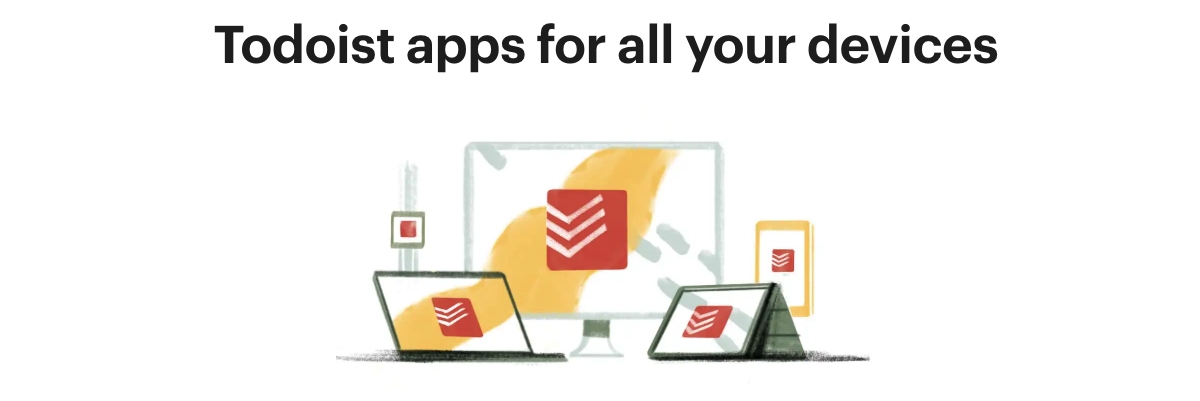
This is hugely important because it means that Todoist can easily fit into your existing workflow, no matter what that looks like.
If all you need is a simple to-do list app, Todoist will work great. But if you’re looking for a more complex task management system, Todoist can handle that too.
And because Todoist is available on so many platforms, you can access your tasks from anywhere.
2 – The interface is clean and user-friendly
The Todoist interface is clean, user-friendly, and easy to navigate. You can quickly and easily add tasks, set due dates, assign labels, and more.
Todoist also makes it easy to stay focused and plan ahead with the Today and Upcoming views in addition to the integration with Google Calendar.
3 – Todoist has more integrations than any other task manager
As I said above, Todoist has apps for all the major platforms. This is a huge advantage because it allows Todoist to be used in conjunction with the tools you’re already using.
No other task manager integrates with as many other tools as Todoist.
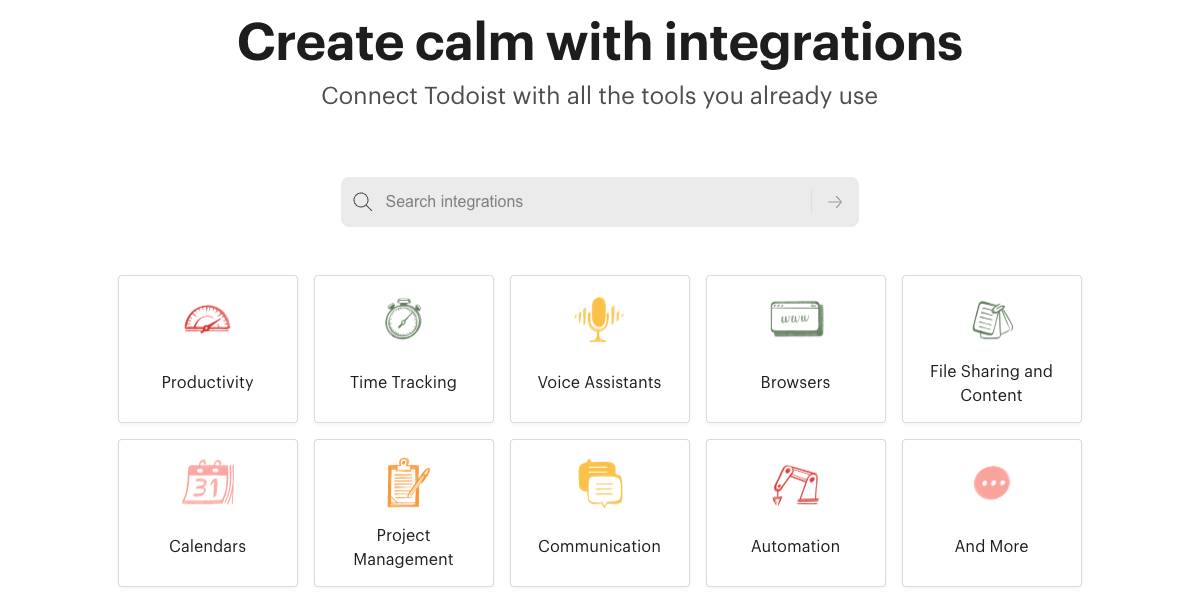
Todoist integrates with Gmail and Outlook, Google Calendar, Siri & Alexa, Zapier, and a ton of other apps through their API.
This makes it easy to get your tasks into Todoist and then get reminders at just the right time.
4 – Todoist is simple, with advanced features for power users
Todoist can do everything from basic task management to more complex project management.
It is great for simple task management like short lists and reminders, but also has advanced features like priorities, labels, and filters. When you combine these advanced features, you can create a completely customized experience that shows you only the tasks you need to see at any moment.
Within Todoist it’s simple to reschedule tasks, so if your plans change you can easily adjust your tasks accordingly.
It also has a great natural language processing engine that makes it easy to add due dates to tasks.
5 – Quick-Add on desktop
You can quickly add tasks in your browser using an extension, or on your computer using the Quick-Add hotkeys by pressing “Cmd+Ctrl+a” on your Mac or “Alt+Ctrl+a” on Windows. This will open up the task creation window where you can add all the different parameters. Your tasks go to the right projects, have the right labels, and have the right due dates.
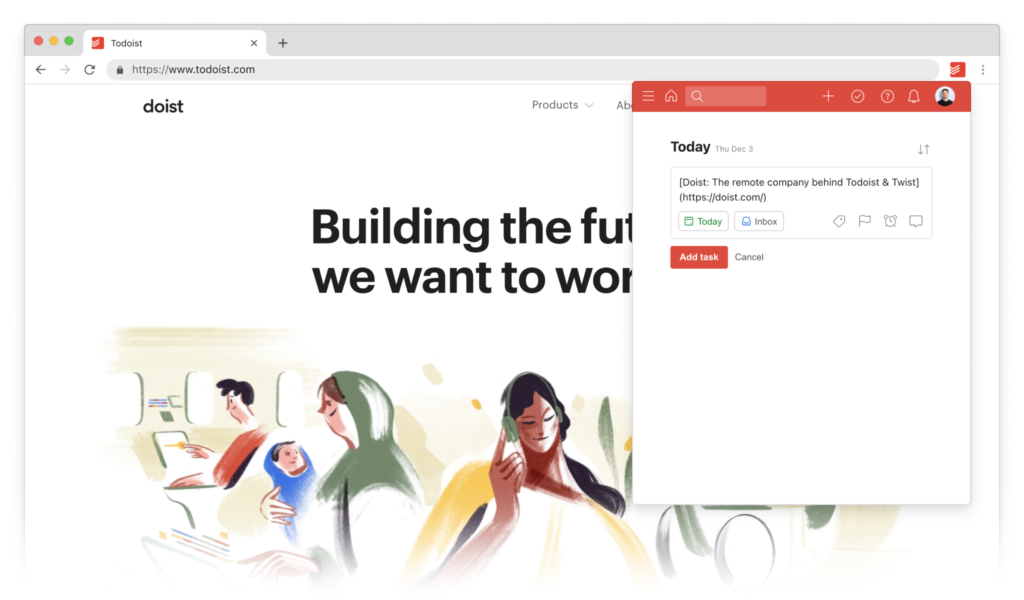
You can also access Quick-Add from the Todoist web app by clicking on the “+” icon in the top-left corner of the screen. This will open up a small window where you can type in your task and hit “enter” to create it.
Quick-Add is a great way to quickly add tasks without having to use a mouse or trackpad. It’s simple and efficient, and it makes Todoist a no-brainer for capturing thoughts before they disappear.
6 – It’s stable, and always being developed
Todoist just works.
The developers take their time to make sure new features work with existing features and that bugs are fixed. They are continually developing and improving the experience.
They’ve added Kanban boards effectively turning Trello’s big advantage into a feature. Todoist’s take on Kanban is simple and effective.

You can create boards for anything you want and drag and drop tasks into columns. This is a great way to visualize your progress on a project.
The Todoist team is always looking for ways to improve the app and make it more user-friendly.
They’ve even recently added an AI assistant, habit-tracking features, repeating sub-tasks, and more experimental features.
What’s Not So Good About Todoist?
1 – Sub-projects and sub-tasks
As I’ve written about before, sub-projects and sub-tasks are generally bad for project management. If you break your tasks down into too many sub-tasks, it can be difficult to get an overview of your progress.
Todoist does allow you to create sub-tasks, but they can be challenging to manage if you have a lot of them. It’s easy for tasks to get lost or missed in the shuffle. This can be frustrating if you’re trying to keep track of a large project with many moving parts.
It’s important to strike a balance between having too many and to few sub-tasks.
2 – Templates need work
Todoist’s template feature is not as intuitive as it could be.
There have been HUGE improvements over the past year, but it’s still difficult to update your templates them before importing.
There are now incredible templates choose from right in the app.
You’ll either need to keep a fresh copy of your template in my account or update a pre-made template every time I want to use it. In my opinion, Nozbe is the absolute best app when it comes to creating reusable project templates.
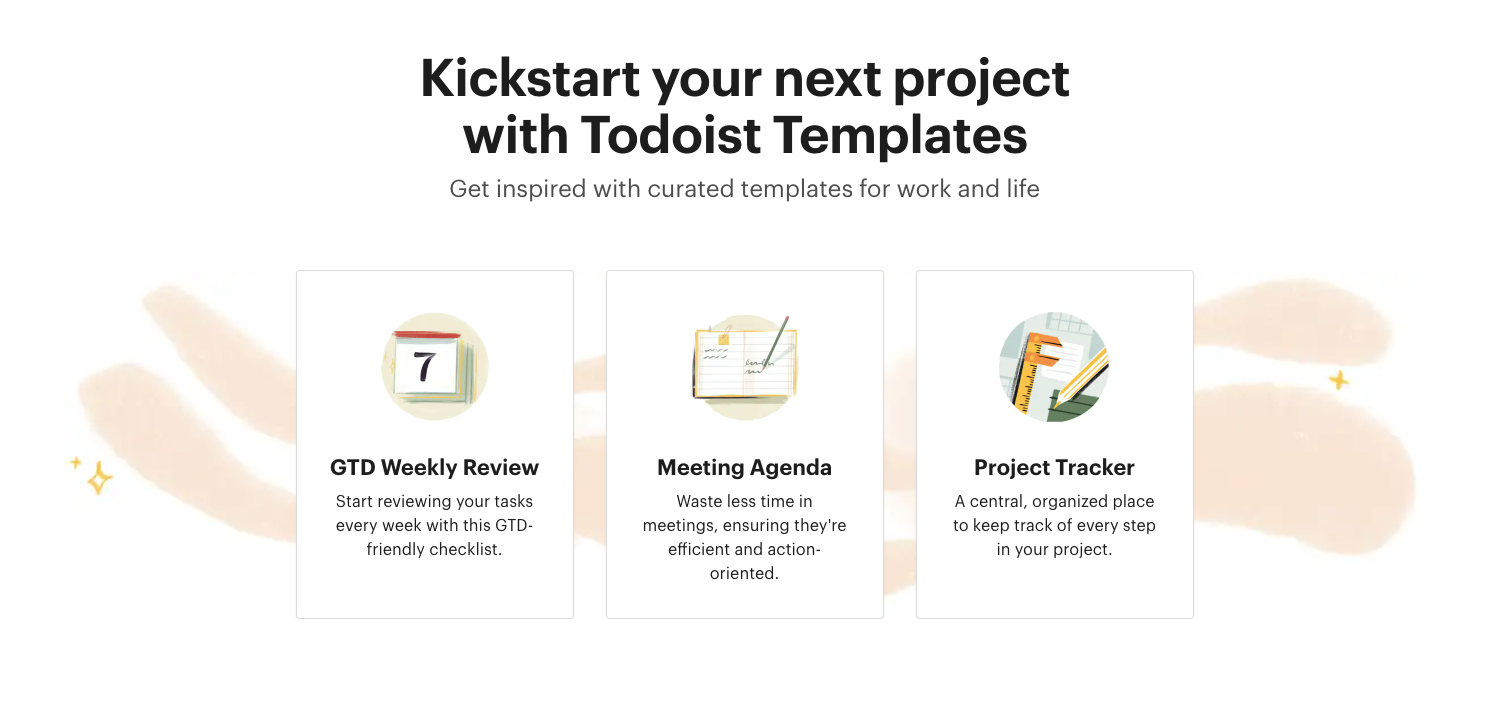
I’ve found that the best way to use Todoist’s templates is to create a separate project for each template. That way, you can easily duplicate it and add and remove tasks as needed without affecting the rest of your Todoist projects.
You still have to manually adjust the dates when a project is duplicated. While this method works, it’s not ideal.
It would be nice if Todoist made it easier to manage templates in the app so that users didn’t have to work around the limitations.
3 – Todoist Karma seems like a gimmick
Todoist Karma is Todoist’s way of gamifying the experience, but it actually traps you into spending too much time in the app instead of actually being productive.
The idea behind Todoist Karma is that you earn points for completing tasks and lose points for missing deadlines. The more points you have, the higher your “karma” score.
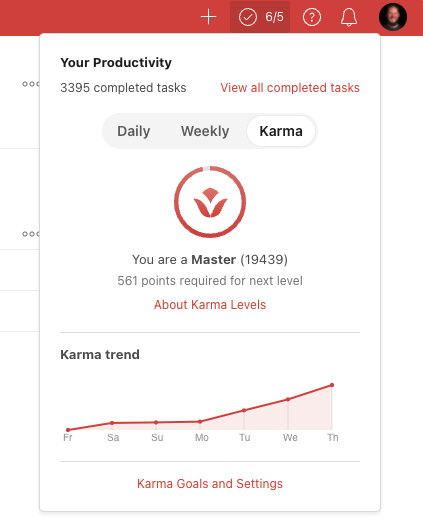
While this may sound like an excellent way to motivate users to be more productive, it can easily have the opposite effect.
Todoist Karma encourages users to spend more time in the app so that they can complete more tasks and earn more points. This means that users are less likely to focus on their work and get things done outside of Todoist.
4 – Recurring sub-tasks (Fixed in 2023)
Another downside to Todoist is that recurring sub-tasks don’t work. Once you check off a sub-task, it disappears. This can be frustrating if you have a task that you need to complete on a daily or weekly basis.
For example, let’s say you have a morning routine that you want to have a single task for with each action in your routine as sub-tasks that you check off. When you check them off, they do not reappear in tomorrow’s recurring task.
I hear Todoist may have something in the works to fix this, but as of this writing (August 2022), we’re still waiting.
Who Is Todoist For (and Who Is It NOT For)?
Who Is Todoist For?
Todoist is a great tool for people who need a simple to-do list app.
It’s perfect for:
- students,
- busy professionals,
- and anyone who wants to get their life organized.
If you’re looking for a simple, straightforward to-do list app that’s easy to use and helps you get your life organized, Todoist is worth checking out!
Who Is Todoist NOT For?
Todoist is not the right tool for everyone.
It’s great for personal use, but in my experience, there are better tools for teams (though they are currently beta-testing a new team workspace version).
If you need a more robust to-do list app with team features like activity notifications and the ability to follow projects without being part of them, you should check out Nozbe.
If your team needs task dependencies, advanced productivity tracking, and process documentation there are other great options out there that offer these features. My favorite is ClickUp.
What’s The Risk In Trying Todoist?
There’s almost zero risk in trying Todoist. You can sign up for free and get a taste of what it offers. If you decide you want to upgrade to Todoist Pro, you can use my link and get two months free.
And if, after using Todoist, you decide it’s not right for you, you wasted a few hours, and no harm was done! Just delete your account and move on.
So what are you waiting for? Todoist is the right choice for anyone looking for a simple, but effective task manager!
Try it out today and get two months of Pro free when you click the button below!
If you have any questions about Todoist or any other to-do list apps, feel free to send me an email or a message on Twitter.
